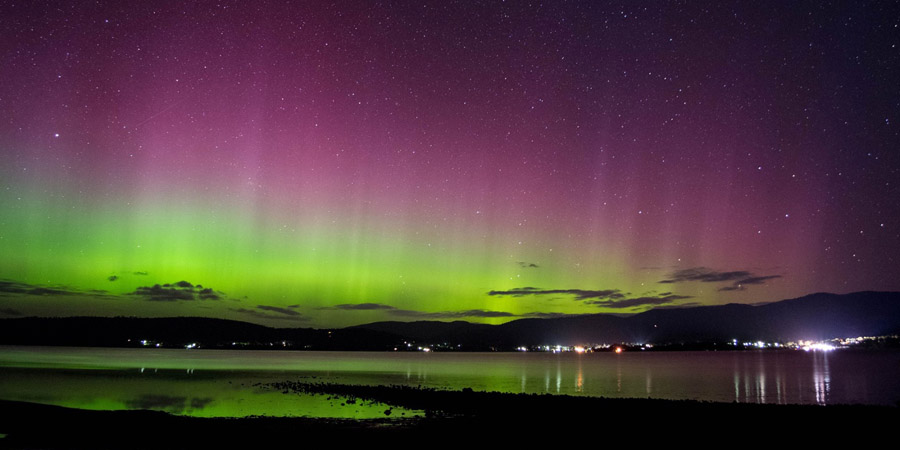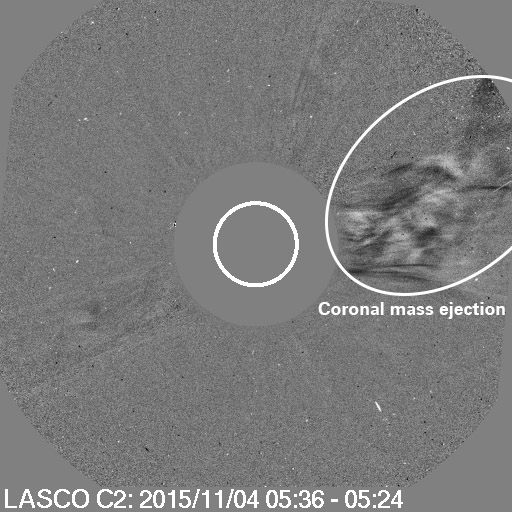Coronal hole effects, M1.9 solar flare
Wednesday, 4 November 2015 11:24 UTC

Geomagnetic conditions remain at the minor G1 geomagnetic storming conditions due to the high solar wind speed and a minor southward Bz component of the IMF.
The coronal hole solar wind stream never gave us the anticipated strong G3 geomagnetic storm. As a matter of fact, not even the moderate G2 geomagnetic storming threshold was reached. The direction of the IMF (Bz) didn't go south long enough during the onset phase to cause storming conditions of the G2 level.
Many high latitude and upper middle latitude with good weather conditions still managed to capture very decent auroral displays. Our header image comes from Tasmania (Australia) and was captured by Frostys Photos. If you managed to capture the aurora as well during the past fewd days please upload your work to our gallery!
M1.9 solar flare
Auroral activity remains elevated thanks to coronal hole solar wind stream effects but we should not forget to keep an eye on the Sun. Sunspot region 2445 was responsible today for an impulsive M1.9 solar flare peaking at 03:26 UTC.
Moderately strong M1.98 solar #flare from #sunspot region 12445 - Follow live on https://t.co/XHATH0OOfT pic.twitter.com/xvjPwEHDWo
— SpaceWeatherLive (@_SpaceWeather_) 4 november 2015
A minor coronal mass ejection was released west of our orbital plane. No impact at Earth is to be expected from this event. The image below shows SOHO LASCO C2 coronagraph imagery of the CME.

Thank you for reading this article! Did you have any trouble with the technical terms used in this article? Our help section is the place to be where you can find in-depth articles, a FAQ and a list with common abbreviations. Still puzzled? Just post on our forum where we will help you the best we can!
Latest news
Latest forum messages
Support SpaceWeatherLive.com!
A lot of people come to SpaceWeatherLive to follow the Sun's activity or if there is aurora to be seen, but with more traffic comes higher server costs. Consider a donation if you enjoy SpaceWeatherLive so we can keep the website online!

Space weather facts
| Last X-flare | 2025/03/28 | X1.1 |
| Last M-flare | 2025/03/31 | M1.2 |
| Last geomagnetic storm | 2025/03/27 | Kp5 (G1) |
| Spotless days | |
|---|---|
| Last spotless day | 2022/06/08 |
| Monthly mean Sunspot Number | |
|---|---|
| February 2025 | 154.6 +17.6 |
| March 2025 | 127 -27.6 |
| Last 30 days | 127 -25.7 |


